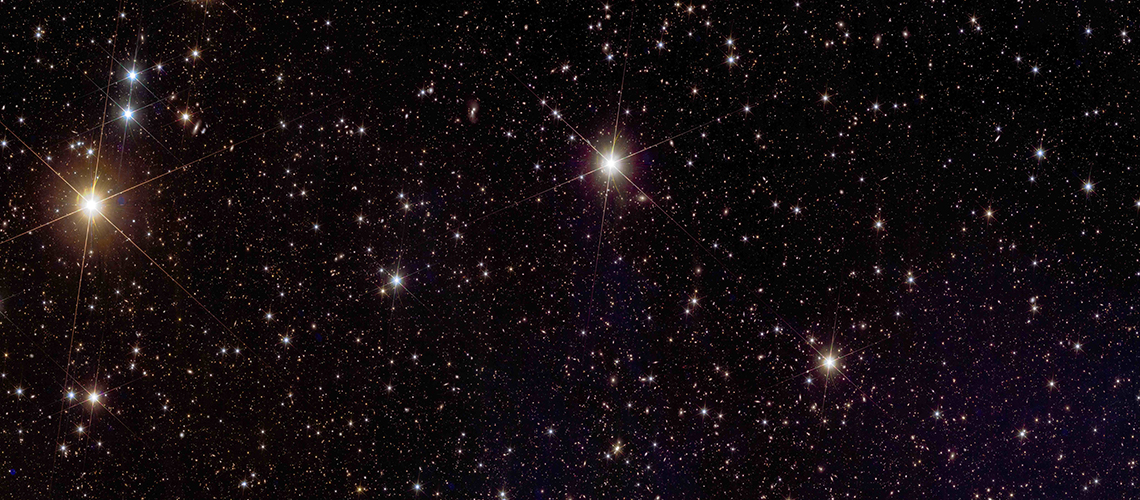Follow us on Google News (click on ☆)
Why is the expansion of our Universe accelerating? Twenty-five years after its discovery, this phenomenon remains one of the greatest current scientific mysteries. Solving it requires testing the fundamental laws of physics, including Albert Einstein's general relativity.

Illustrative image Pixabay
A team from the universities of Geneva (UNIGE) and Toulouse III - Paul Sabatier compared the predictions of the renowned physicist with measurements based on data from the Dark Energy Survey program. They found that a slight discrepancy may appear, depending on the epochs of the cosmos' history when these calculations are made. These results, published in Nature Communications, question Einstein's theories' validity in explaining phenomena outside the solar system, on the scale of the Universe.
According to Albert Einstein's theory, our Universe deforms under the influence of the matter it contains, somewhat like a large flexible sheet. These deformations, caused by the gravity of celestial bodies, are called "gravitational wells." When light passes through this landscape of irregularities, its trajectory is bent by these wells, as if by a glass lens. But here, it is gravity and not glass that curves the light. This is called the "gravitational lensing" effect.

Gravitational lensing of distant galaxies by the galaxy cluster Abell 2390, observed by the Euclid satellite.
© ESA/Euclid/Euclid Consortium/NASA, image processing by J.-C. Cuillandre (CEA Paris-Saclay), G. Anselmi
Observing this effect provides information on the components, history, and expansion of the Universe. Its first measurement, in 1919 during a solar eclipse, confirmed Einstein's theory, which predicted a light deviation twice as large as that of Isaac Newton. This difference is explained by Einstein's introduction of a new "ingredient": the deformation of time, in addition to the deformation of space, to determine light's exact curvature.
Theory vs data
But do these equations hold at the far edges of the Universe? This is the question posed by many scientists seeking to quantify the matter density in the cosmos and understand the acceleration of its expansion. Through an unprecedented use of the Dark Energy Survey data—a global program surveying the shapes of hundreds of millions of galaxies—a team from the universities of Geneva (UNIGE) and Toulouse III - Paul Sabatier brings new insights.
"So far, Dark Energy Survey data has been used to measure the distribution of matter in the Universe. In our study, we used it to directly measure the distortion of time and space, and thereby compare our results with Einstein's predictions," explains Camille Bonvin, associate professor in the Department of Theoretical Physics at the Faculty of Science, UNIGE, who led the research.
A slight discrepancy
The Dark Energy Survey data enables scientists to look very far into space, and thus far into the past. The Franco-Swiss team was able to analyze 100 million galaxies at four different moments in the Universe's history: 3.5, 5, 6, and 7 billion years ago. These measurements helped determine how gravitational wells evolved over time, spanning more than half the history of the cosmos.
"We discovered that far back in the past, 6 and 7 billion years ago, the depths of the wells are entirely consistent with Einstein's predictions. However, in the more recent period, 3.5 and 5 billion years ago, they are slightly shallower than predicted by Einstein," reveals Isaac Tutusaus, associate astronomer at the Research Institute in Astrophysics and Planetology (IRAP/OMP) of the University of Toulouse III - Paul Sabatier, and the study's lead author.
It is also during this same recent period that the Universe's expansion began to accelerate. It is therefore possible that the answer to these two strange phenomena—the acceleration of the Universe and the slower growth of gravitational wells—is the same: gravity may obey physical laws on a large scale that differ from those of Einstein.
A reason to invalidate Einstein?
"Our results show that Einstein's predictions have a 3-sigma discrepancy with the observations. In the language of physics, such a level of incompatibility attracts our attention and calls for further investigation. But this discrepancy is not yet large enough to refute Einstein's theory.
To achieve this, a 5-sigma threshold would need to be reached. It is therefore crucial to have more and more precise measurements to confirm or invalidate these early findings and determine whether this theory remains valid in our Universe at very great distances," notes Nastassia Grimm, postdoctoral researcher at the Department of Theoretical Physics at the Faculty of Science, UNIGE, and co-author of the study.
The team is preparing to analyze new data from the Euclid space telescope, which was launched a year ago. Since Euclid observes the Universe from space, its gravitational lensing measurements are much more precise. Moreover, Euclid is expected to observe a phenomenal number of galaxies: around 1.5 billion within six years of observation. This will enable scientists to better measure spatio-temporal distortions, look even further back in time, and further test Einstein's equations.